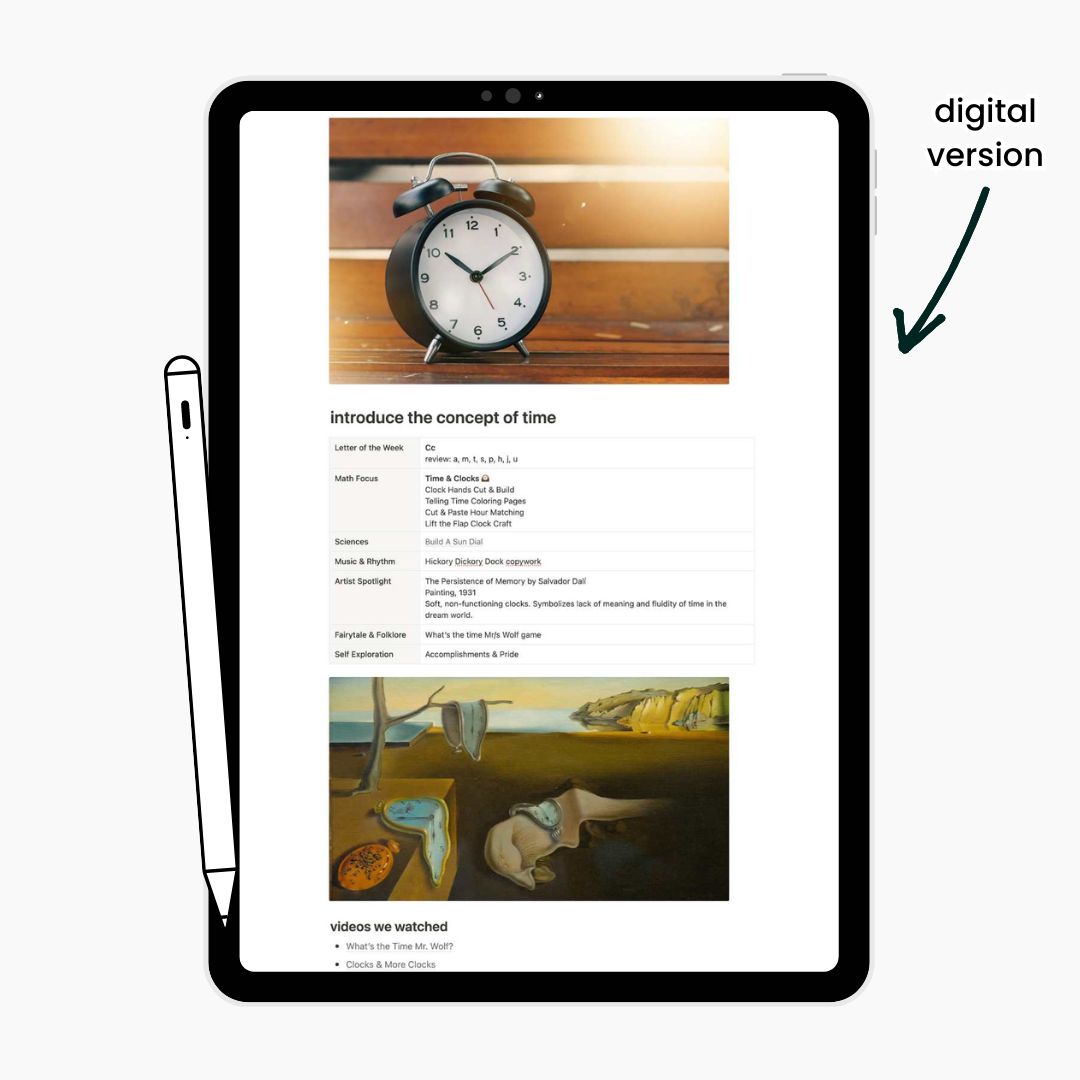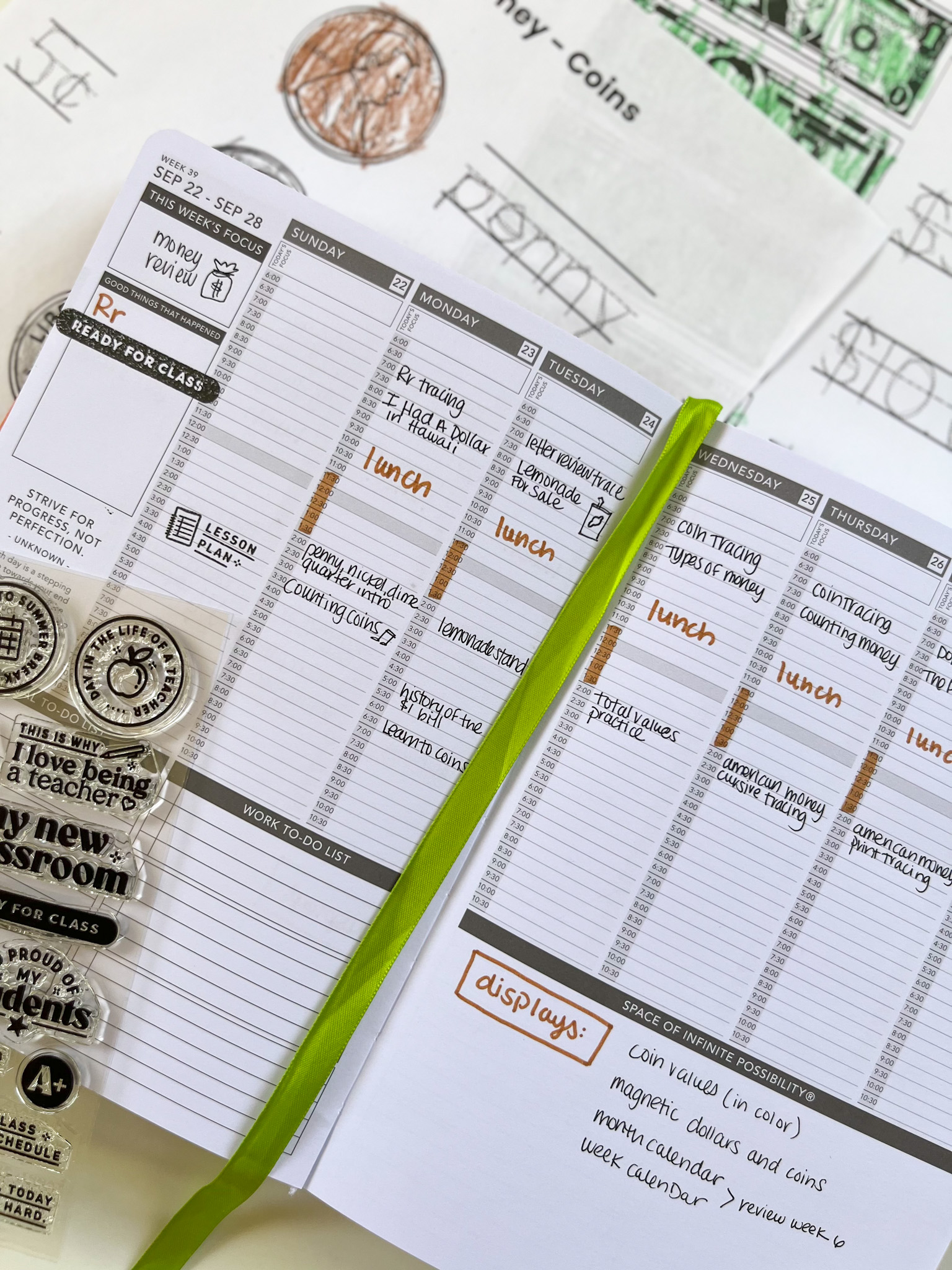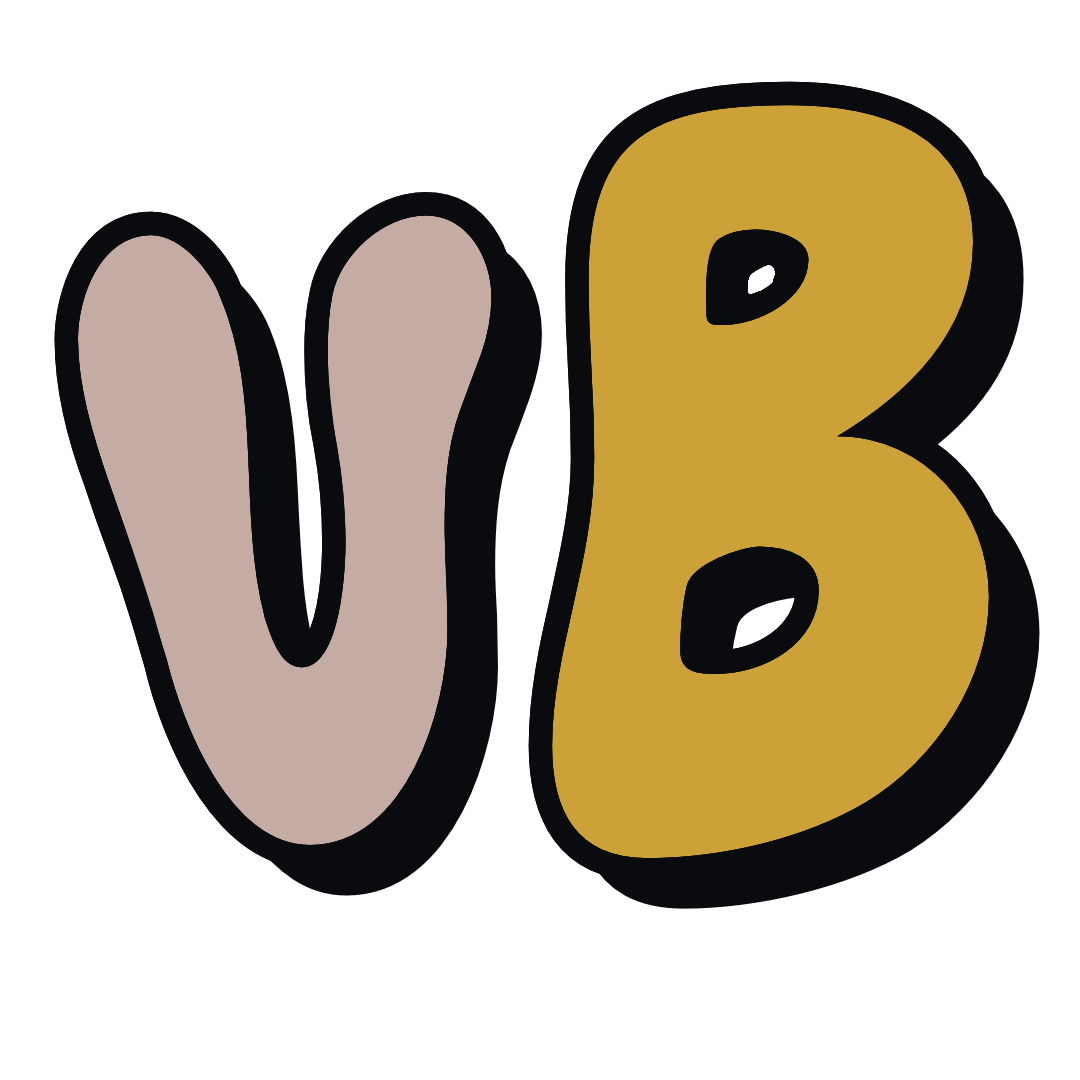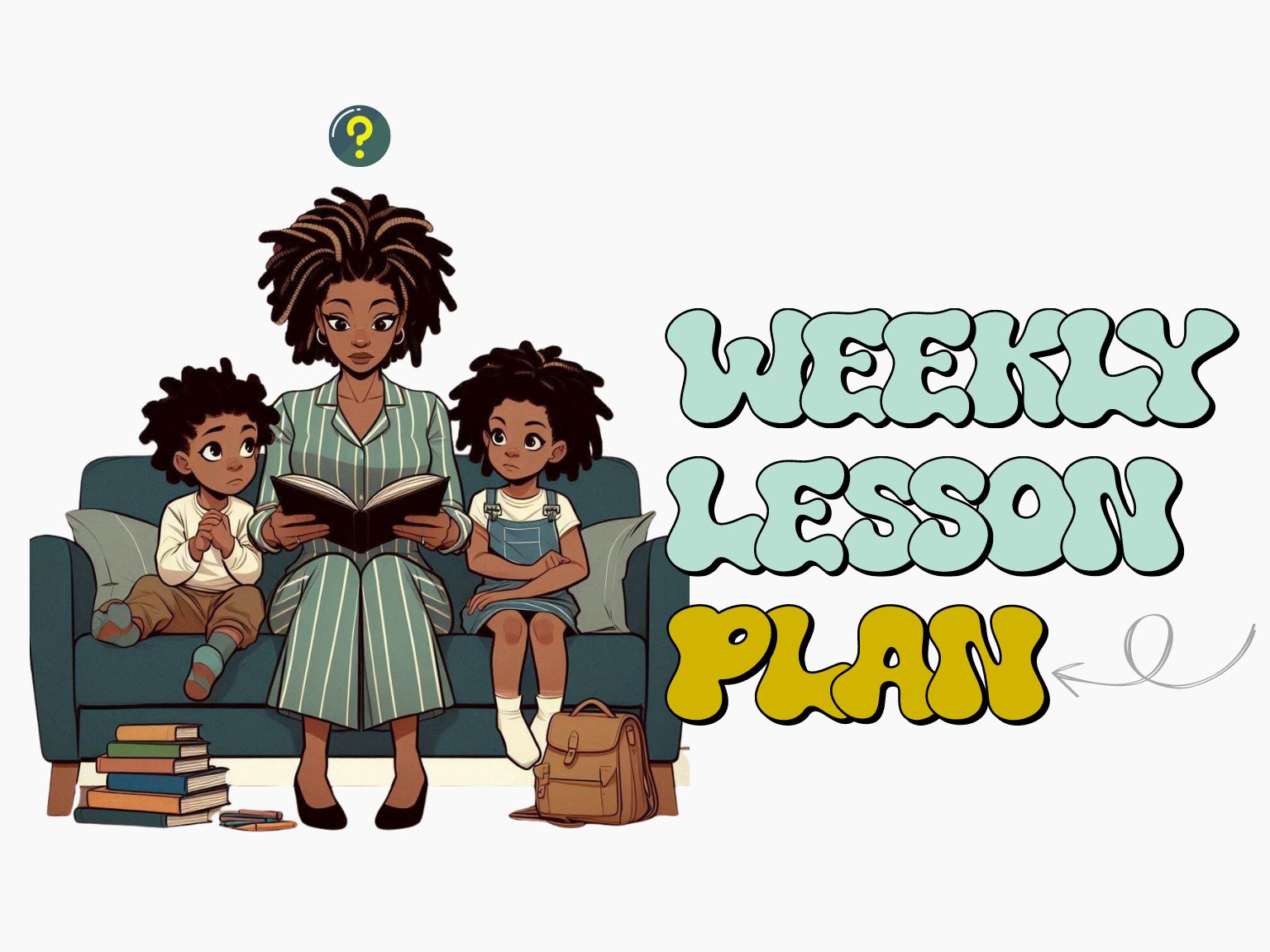Before we get started, just an update: I am homeschooling a Kindergartner but her baby brother is in TK and joins us in lessons about 75% of the time. Because of this I prep as if I will be presenting the lesson to both kids. If he decides a particular lesson isn’t fun enough he’s free to go on about his business.
Preparing a Weekly Unit Lesson Plan
I prepare our weekly lessons the Sunday before we start them. For the most part everything is at least planned and outlined during our session breaks. We are “in school” three weeks, and then take one week off. During this week off, I choose the topics per week and roughly prepare what I want to present.
This includes (at a minimum):
- arts and crafts projects
- letter of the week
- math concept for the week
- life science exposure
- handwriting practice
- self exploration topics
Once this is laid down, I usually get all motivated and start filling in where I can. I’ll research any outings or field trip ideas. This is when I compile our book list for the session. Materials are gathered and missing items are shopped for. In order for all of these things to take place with as little resistance as possible, I always follow the same steps. Here’s what I do during our off-week.

Steps to Weekly Lesson Planning
- Observe: We are a Montessori household and so one of the very first parenting muscles we built up when Bug was a baby, is being an active observer. I have been with her almost every single day of her life — in fact her first night away from me was the week she turned 5 years old. Remaining in close proximity and purposefully attentive to her needs, communication approaches, and learning styles has been a tremendous asset for me as her teacher now. I am fairly easily able to tell when she’s grasped a concept, feeling un-qualified or less confident, and when a challenge presented is just too remedial for her. I use this information to gauge what to present to her as well as the best course of action in how I present lessons to her.
- Brainstorm: When I begin my brainstorm one of the first tactics is to just list where my child is currently and where we hope she lands. If Bug has a particular goal she is trying to reach I always try and include that in our lesson in some way. Whether it’s how to fasten a certain type of button or how to sound out particular letters, keeping in mind something she is already motivated about never fails. Secondly, I brainstorm a lot of guesses that I think might interest both kids at the same time. If they’ve been noticing the moon more every night, I’ll take note of this. If I can build a whole week’s worth of lessons around the phases of the moon or something connected to it, we do it.
- Choose a Topic: Funny that we’re on the third step and still have not actually selected a topic. As I mentioned above I have a short criteria list of what would make a solid weekly lesson topic for us. I’ve got to see it as valid, so it needs to be useful as well as engaging. Additionally, we need to actually be able to pull it off. Every year when summer ends I get all the fall feels and then Hawaii slaps me with the sweatiest Halloweens I’ve ever seen in my life. We don’t get to experience leaves changing color and then falling from trees, so right now, an autumn lesson would look a little silly.
- Research: After I have selected a topic, I tell my kids. As we go on about our lives they almost certainly will give me more and more ideas about ways to go about the topic. I also do as much research ahead of time as I can. You never know when your child is going to ask you how much a panda’s baby weighs at birth, it’s kind of nice to have some idea beforehand. (It’s 5 ounces, in case you were curious.) The research phase is when I’ll collect information and resources, and I also start building any displays I think might be useful.
- Lesson Plan: After all this is completed, I can plan my lessons by the week. Let’s say we are studying Money for a three-week session. At this point I have all my research, notes, drafted display ideas, and maybe even some worksheets. Now I just need to map out when we can fit in each activity, project, presentation, video, and lesson. Everything up until now I would have completed in Notion. I hand write out the plans for the week in my Passion Planner just so I have it with me throughout the week — without having my phone nearby. (I get easily distracted by all the random notifications sometimes so this helps.) I’ll write out the name of the lesson, relevant book with page numbers, or game we are planning to play. This is very roughly laid out throughout the week but it does help me visually to have everything listed with the timestamps. Any appointments we have are also written down so I can plan around everything we need to. On Sunday I print out the final items I may need and that’s a wrap. We are ready on Monday morning to plug and play.

You can get a better look at the Notion Homeschool Planner in this blog post. The Lesson Planner is broken up by what we call Sessions (our three weeks “on”) and Weekly Lesson Plans just the way that I utilize it this year. I added in a Unit Studies by the Month list just to give you some ideas of topics we have tried or still have pending to learn about. There’s a little brainstorming section that even has a button to add a new topic directly to the Lesson Planner database.
I hope this blog post gave you a better idea of the process for developing a full lesson plan. We’ve done some funny topics, my favorite still holding strong at Chickens & Cheese, and really enjoy them more when I prep properly. These are the guidelines that get me there. How do you go from idea to full-blown lesson plan?


Leave a Reply